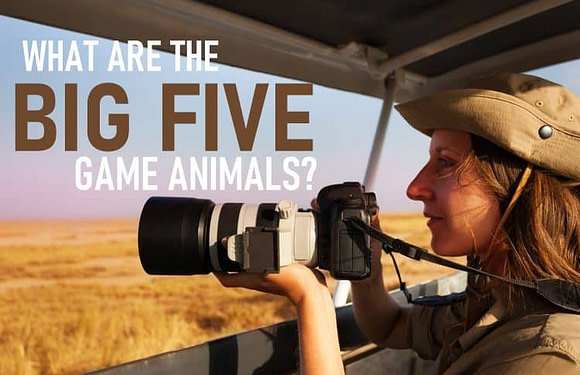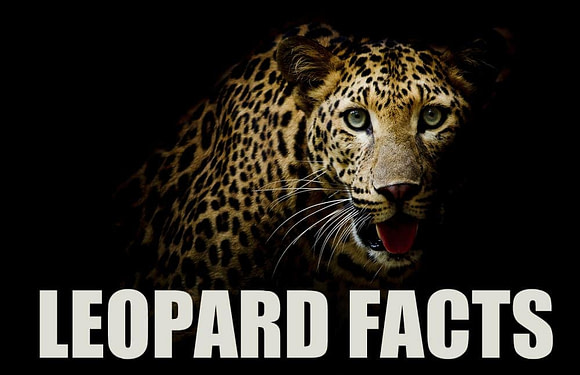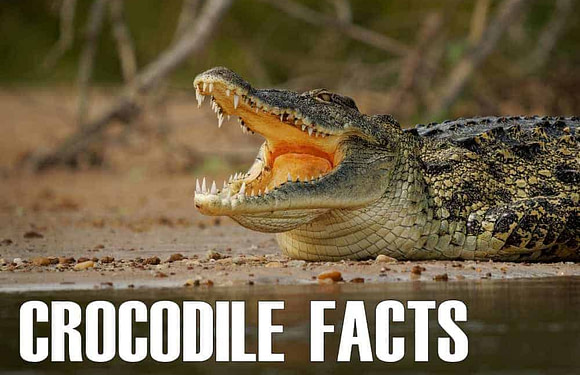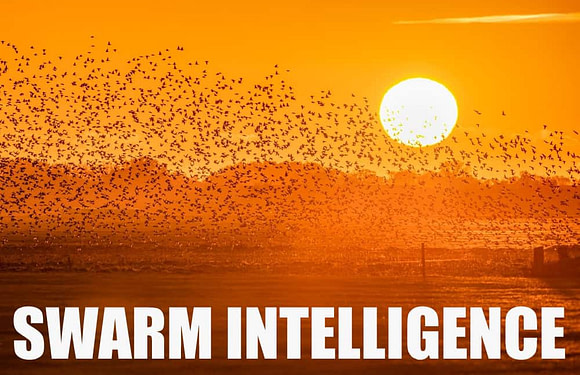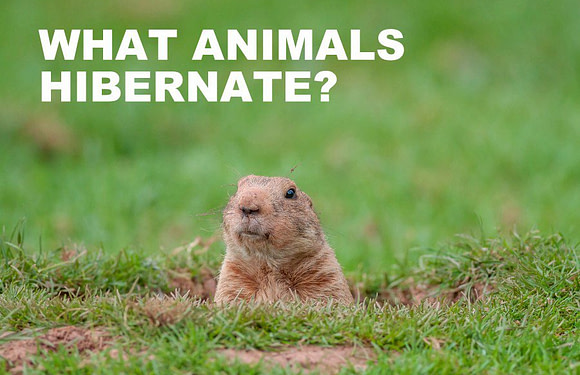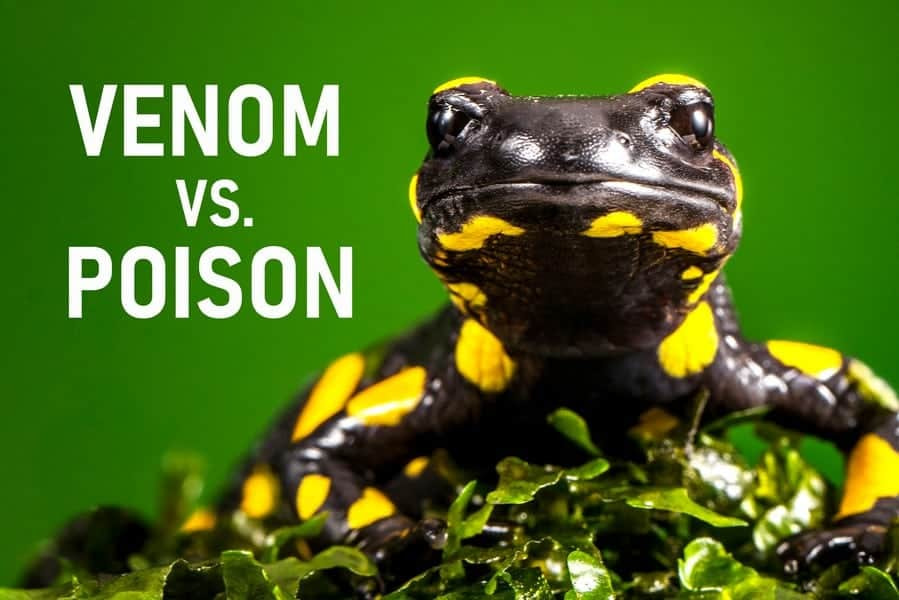
Venom and poison are both toxic substances that are naturally produced by animals. The primary difference lies in the method of delivery, where venom is injected into another organism while poison is ingested or absorbed by another organism.
To inject venom, animals have specialized anatomical structures such as fangs, spines, or stingers. Venom targets physiological systems quickly and efficiently which helps to subdue prey or deter predators.
Conversely, poisonous animals do not actively deliver their toxins. Instead, their toxicity is a passive defense mechanism. While venomous animals produce venom through its glands, poisonous animals typically become toxic through the accumulation of chemicals from their environment. They carry poison within their body tissues, which can cause illness or death in the predators that touch or ingest them.
Venomous Animals
Here are examples of venomous animals categorized by the delivery method:
Venomous Animals with Fangs
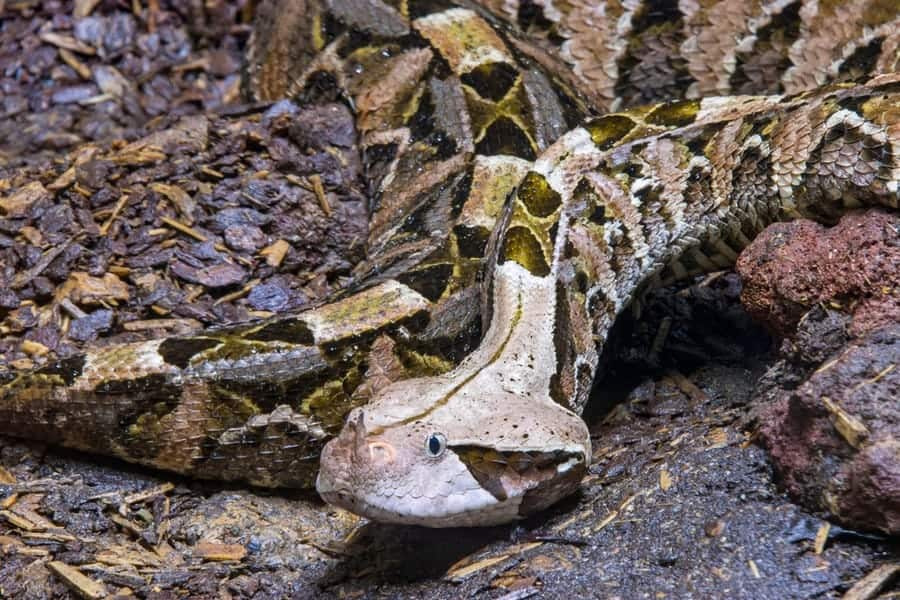
- Gaboon Viper – Known for having the longest fangs of any snake, found in the rainforests of Africa.
- Black Widow – This spider has a potent neurotoxin which can cause severe pain and muscular problems in humans.
- Giant Centipede – Capable of delivering a painful bite that can cause severe discomfort and medical complications in rare cases.
- Gila Monster – One of the world’s only known venomous lizards with grooved teeth that channel venom into their prey.
- Solenodons – Small, nocturnal mammals found primarily in the Caribbean with grooved teeth and venomous saliva.
Venomous Animals with Spines
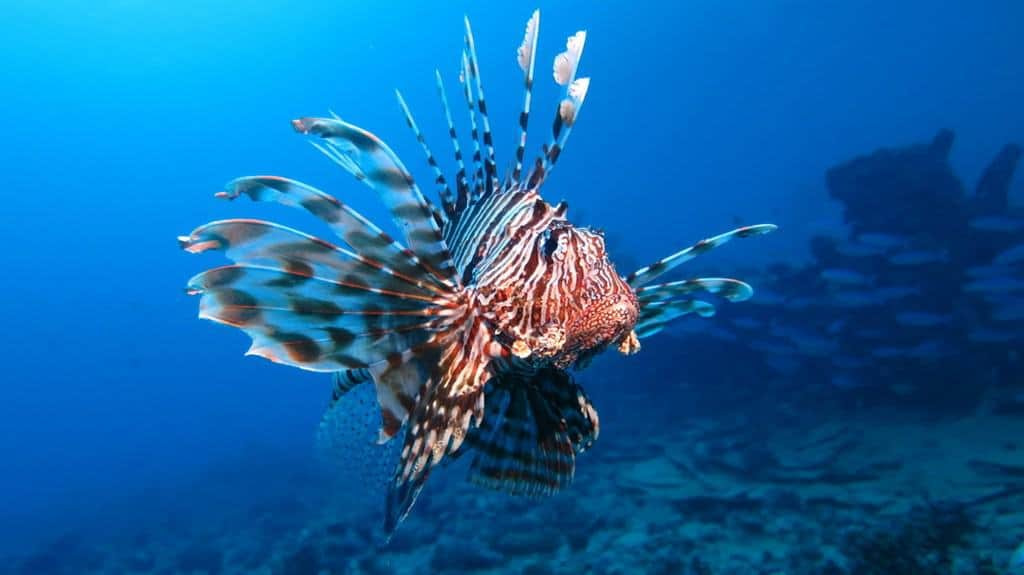
- Lionfish – Tropical fish with venomous spiny fin rays, invasive in the Western Atlantic.
- Stonefish – Considered the most venomous fish in the world, found in the Pacific and Indian Oceans.
- Stargazer – A fish with venomous spines located on its dorsal surface, capable of delivering potent venom.
Venomous Animals with Stingers
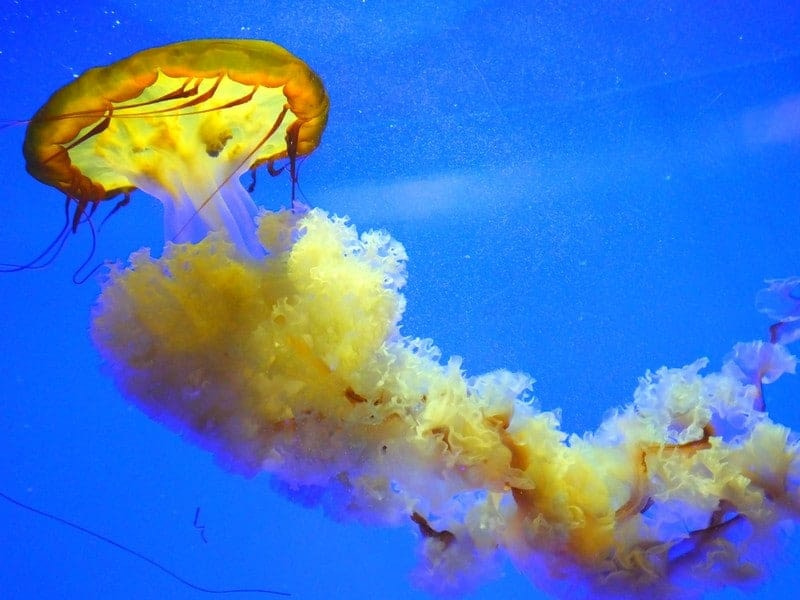
- Box Jellyfish – Possesses tentacles lined with stingers that deliver venom capable of causing fatal reactions in humans.
- Scorpion – Equipped with a venomous stinger at the end of their tails, used for prey capture and defense.
- Stingray – Venomous stingrays are equipped with one or more barbed stingers on their tails that contain toxins that can cause intense pain, swelling, and tissue damage.
- Honey Bee – Uses a barbed stinger to deliver venom, primarily for defense.
Venomous Animals with Other Mechanisms
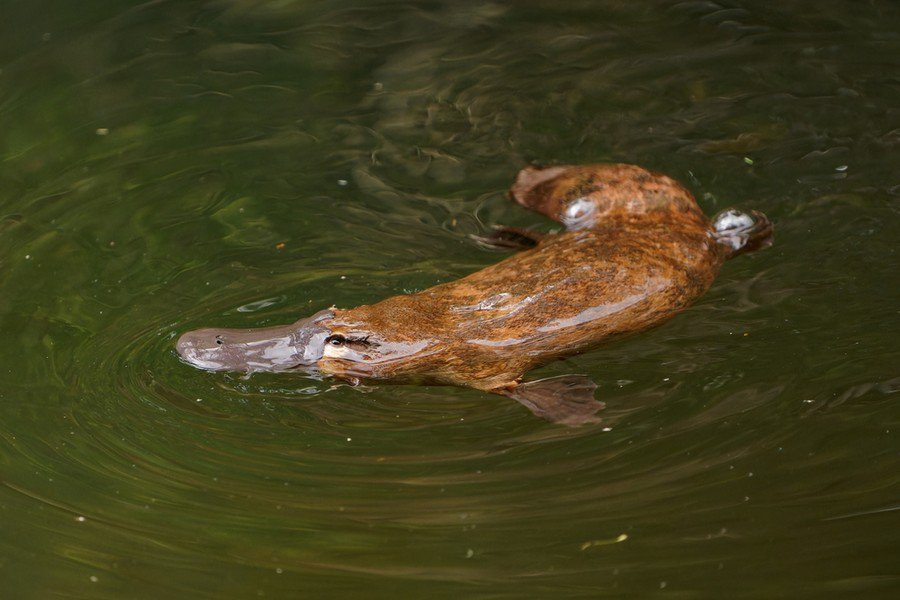
- Platypus – Males possess spurs on their hind limbs that can deliver venom, found in eastern Australia.
- Slow Loris – The only known venomous primate; produces toxin in an arm gland, which it delivers by biting.
- Cone Snail – Uses a specialized tooth as a harpoon-like structure to inject venom into prey, found in warm marine waters around the globe.
- Vampire Bat – Their saliva contains enzymes and proteins that function as anticoagulants which facilitates feeding.
Poisonous Animals
Here are examples of poisonous animals categorized by animal class:
Poisonous Mammals

- African Crested Rat – These rodents chew on poison arrow trees and apply their toxin-laden saliva to specialized hairs that absorb and hold the poison. When threatened, the rat puffs up its fur to expose the hairs.
Poisonous Birds
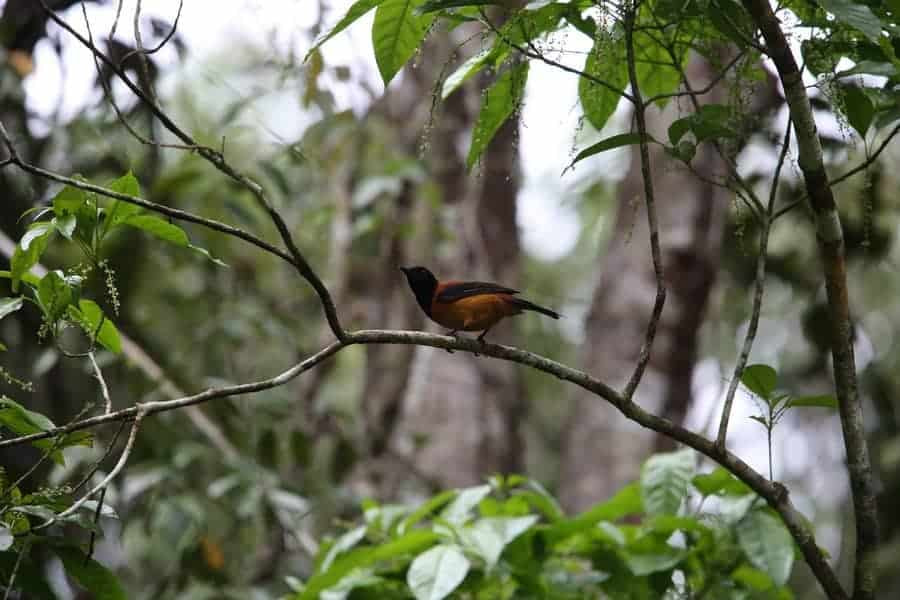
- Hooded Pitohui – This bird carries the neurotoxin batrachotoxin in its skin and feathers. The poison is believed to come consuming toxic beetles.
- Blue-capped Ifrit – This bird contains neurotoxic alkaloids in its skin and feathers, similar to those found in the Pitohui.
- Common Quail – The toxicity of the Common Quail is diet-dependent. They can become toxic during certain times of the year when they consume hemlock or other toxic seeds. This does not appear to be a deliberate defense mechanism.
Poisonous Fish
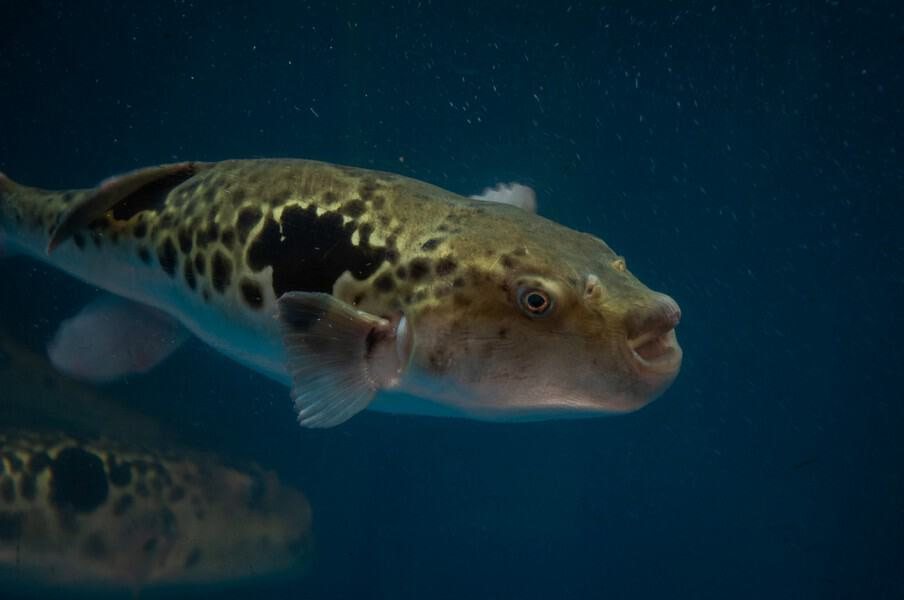
- Pufferfish – Pufferfish contain a deadly neurotoxin in their organs and sometimes their skin. It is extremely toxic to predators and humans if consumed.
- Stonefish – Though they are primarily venomous with venomous spines, their flesh can also contain toxins making them dangerous to eat.
Poisonous Cephlapods
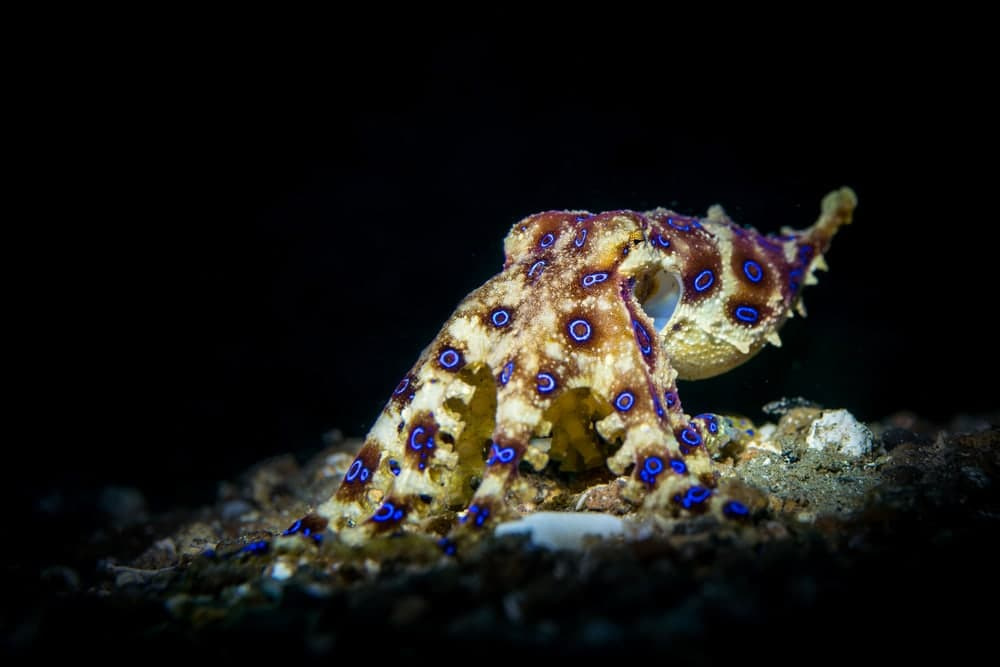
- Blue-ringed Octopus – This octopus carries tetrodotoxin, which it uses to incapacitate prey and as a defence against predators. Its bright blue rings become more prominent when threatened, serving as a warning sign of its potent toxicity.
- Pfeffer’s Flamboyant Cuttlefish – The flesh of this cuttlefish contains toxic compounds, making it one of the few known toxic cephalopods.
Poisonous Reptiles
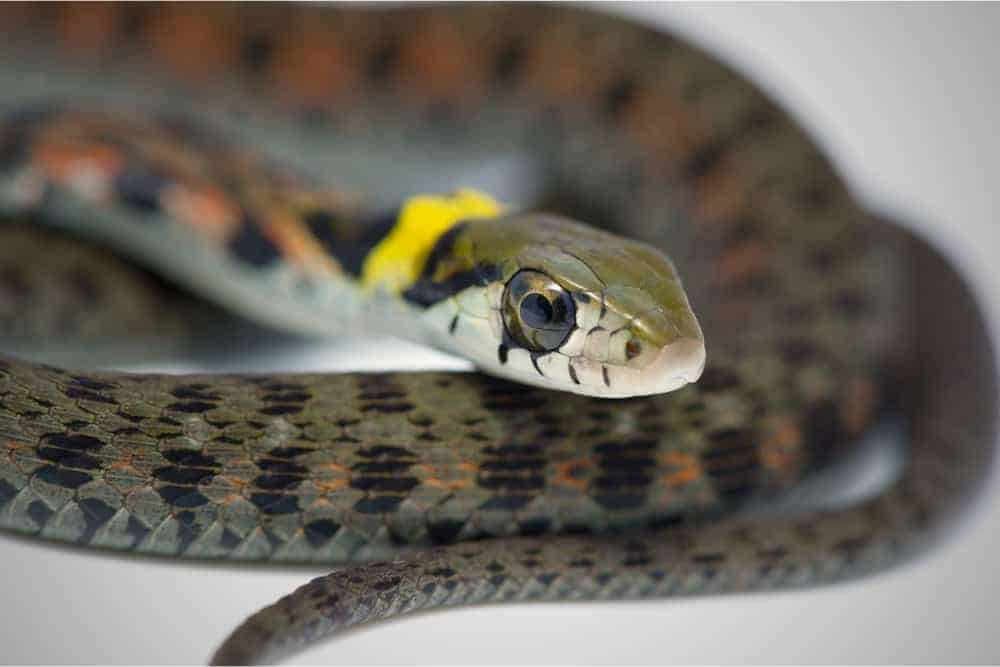
- Rhabdophis Keelback Snake – This snake possesses nuchal glands in its neck, which store toxins that can be released in its defense.
- Garter Snake – Garter snakes are capable of storing toxins in their body from the amphibians that they eat.
Poisonous Amphibians
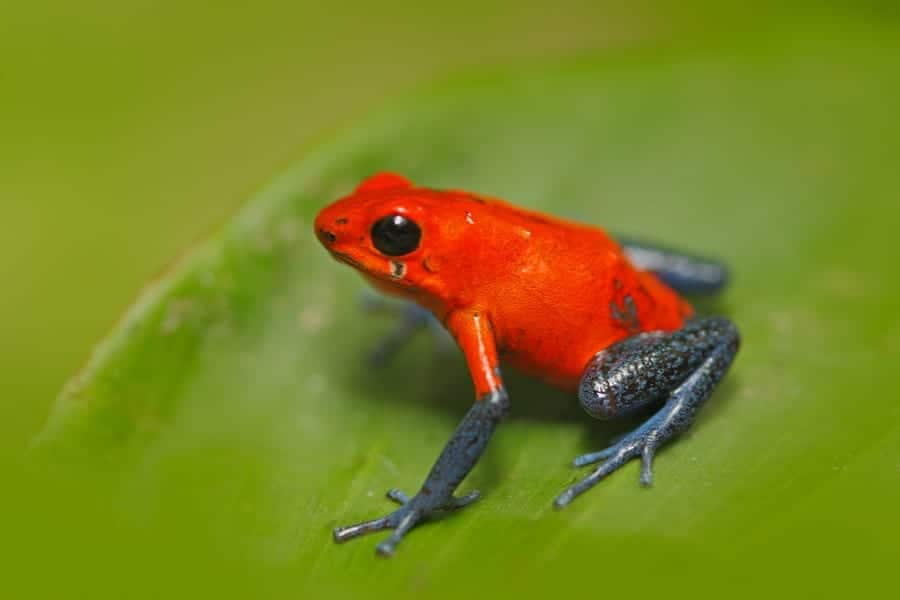
- Poison Dart Frogs – These frogs are perhaps the most famous poisonous animals. They secrete toxins through their skin, which can be deadly.
- Common Toad – The skin glands of these toads produce bufotoxin, which is harmful to many of its potential predators.
- Newts – Many newts produce tetrodotoxin, a potent neurotoxin, which makes them highly toxic to predators.
Poisonous Insects
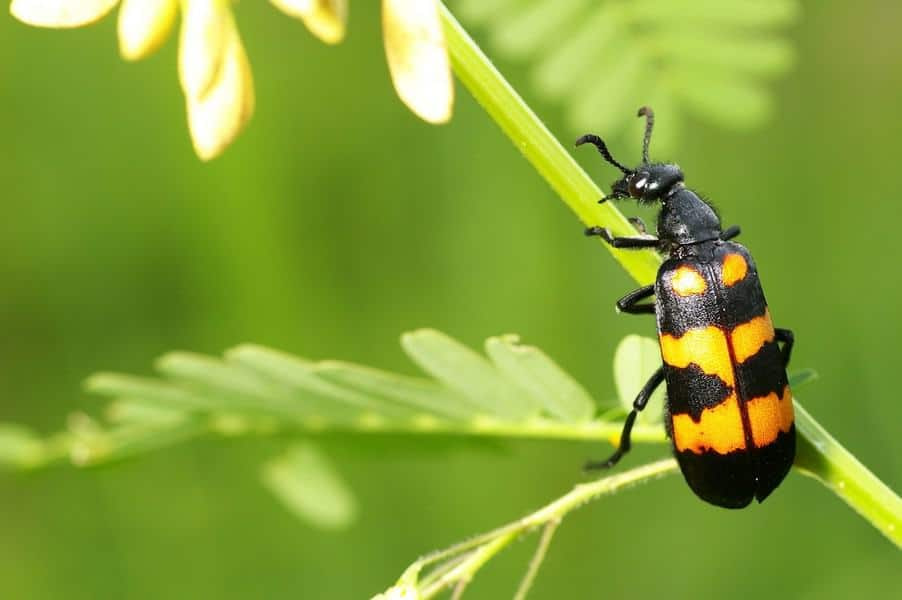
- Blister Beetles – These beetles secrete a chemical which can cause blistering of the skin and is toxic when ingested.
- Monarch Butterfly – The caterpillars consume milkweed, which contains toxic compounds, making them and adult butterflies poisonous.
Other Poisonous Animals
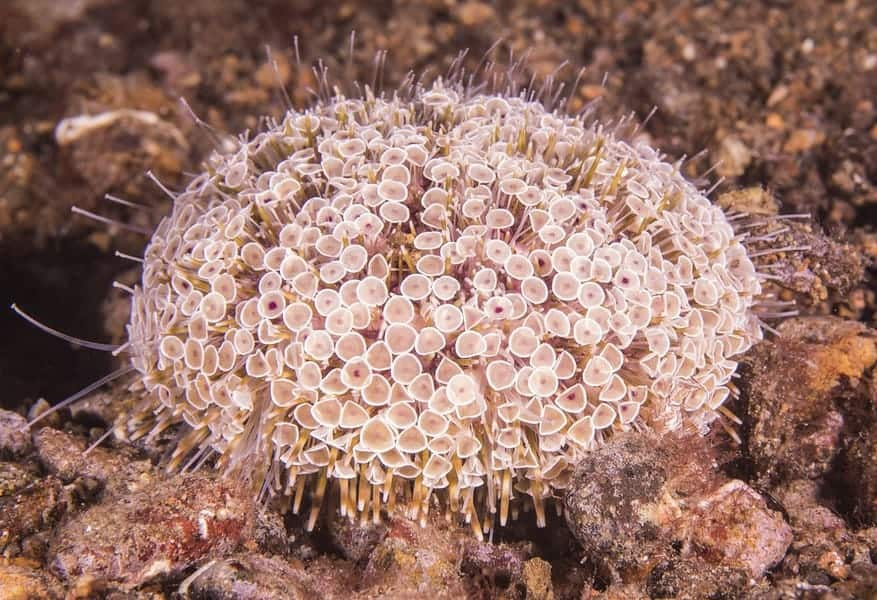
- Flower Urchin – Considered the most dangerous sea urchin, the Flower Urchin is venomous and poisonous. Its tissues are toxic if ingested.
- Black Sea Cucumber – This is the only poisonous species of sea cucumber. When threatened, they release a toxic secretion called holothurin.
Both venomous and poisonous animals utilize toxins for survival. The main differences lie in how these toxins are delivered and used. Venomous animals actively inject toxins, while poisonous animals rely on the passive transfer of toxins when they are eaten or touched.



















































